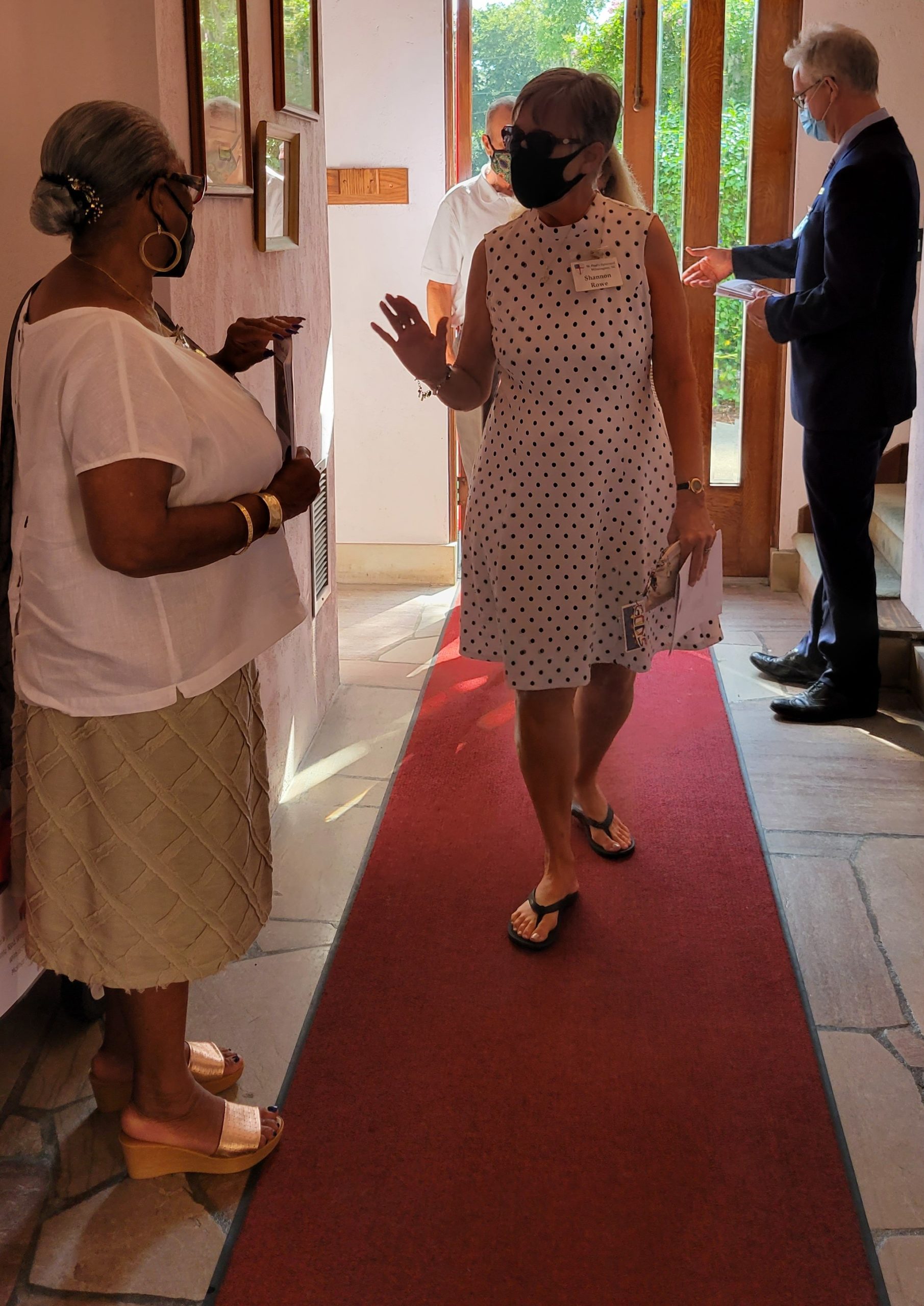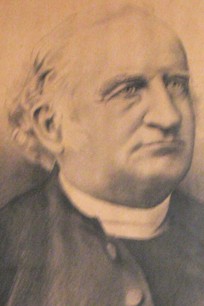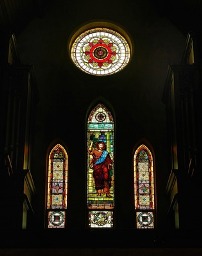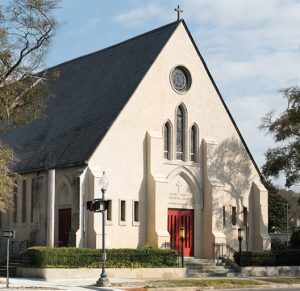About Us
Welcome!
Whether you are checking us out on this website or you’ve already been our guest for Sunday worship or a music event — welcome to St. Paul’s! While many things can be said about the people and ministries of St. Paul’s, one thing is true: We are simply real people learning how to live in community with one another. And we believe that God is real. We experience God’s Spirit, through Jesus, moving among us, loving us and teaching us how to love.
We care about each other and we care about our neighborhood and community. We enjoy worshipping and working and eating together!
The Christian way is both personal (the realm of God is within you) and corporate (the realm of God is among you) and being in a faith community helps us on our journey. Perhaps St. Paul’s is a place for you. Welcome!
Historic St. Paul’s
St. Paul’s is a parish in the Episcopal Diocese of East Carolina established in 1858. We open our doors to all who seek God or a deeper knowledge of God. We are pleased you have chosen to visit our website. We come here to celebrate what we believe about life and to be nourished and renewed for our daily living: in the work place, at school, with family and friends, and in times of solitude or loneliness. Worship is the center of our community’s life together, and the Eucharist is the center of our worship. We are inclusive, and offer a welcoming environment of worship, education, music, fellowship and ministry. Our church family hopes you will join us.
Parish History
1856. First Episcopal Services at 4th and Orange streets in a dwindling Methodist Protestant chapel.
1858. Bishop Thomas Atkinson and his wife, Josepha, establish St. Paul’s. Black and white members worship together. Pews are free. Black craftsmen renovate the church for the bishop’s Episcopal services. Music offered by a black choir. At times called the “little church on the corner.”
1862–1865. Yellow Fever and the Civil War all but close St. Paul’s.
Reopened as St. Paul’s Colored Mission. As many as 280 children of color are taught in a day school by two white women from the Episcopal Church’s Freedman’s Commission.
Black members of St. Paul’s build and establish St. Mark’s Episcopal Church, having outgrown St. Paul’s. White members re-organize the parish.
1871–early 1900s. Church is renovated and repaired several times.
1887–1888. Church is refashioned architecturally. Stained glass windows by Charles Booth of New York and London are installed. The patron saint window of St. Paul and the two lancet windows is a memorial to Bishop Atkinson. Rose windows include the Agnus Dei, the Gause Memorial window, and two additional round windows.
1912. Move to the “streetcar suburbs.” New “little brick church” built at 16th and Market Streets, including old furnishings and re-installation of the stained-glass windows.
1918. Ralph Adams Cram, famous ecclesiastical architect of Cram and Ferguson, Boston, contacted for plans to rebuild as a cathedral for the diocese. Plans sent but have been lost.
1921–1961. The Rev. Alexander Miller, rector, guides St. Paul’s through building the Parish House/Rectory/Church complex.
1926–1927. Parish House with gymnasium built for church and community use. Lynch and Foard of Wilmington, architects. Used also for Camp Davis officer training.
1938–1957. Brick church fails. Worship for 19 years in Parish House. Stained-glass windows preserved.
1956. Ground-breaking for present St. Paul’s church. Designed as cathedral-style church, Lynch and Foard of Wilmington, architects. Pews and furnishings by Walter Furr of Page Church Furniture, Albemarle, North Carolina. Old stained-glass windows re-installed after years of storage. Chapel and nave windows newly made by A&H Art and Stained Glass, Co., Harmony, North Carolina.
1958–Present. First service in new church building. Parish House, Rectory, and St. Paul’s House, and Ormond Center (2016) become centers for church and community ministries including Beggar’s Theatre (1970s), youth programs, Women’s Resource Center, Elderhaus (1983-1995), TEACCH and others.
1995–Present day. Goudling & Wood Opus 26 pipe organ, gift of Isabelle Lehto (1995), and antiphonal organ in the gallery with trumpets, gift of Hazel Savage estate (1996), installed. St. Paul’s continues to grow, develop new ministries, and open its doors for worship and to welcome to all people.
2016–Purchase of Ormond Center.
For more information, please contact Parish Historian and Archivist Ellen C. Weig, archivist@spechurch.com.
Today
St. Paul’s continues to be a thriving, open-minded, diverse community of faith. We place great priority in providing meaningful worship in the Anglican tradition.
With excellent acoustics and two organs, the church is known in the community for our high-quality musical concerts and recitals. Many newcomers are initially drawn to the church by these musical offerings.
We are also known for our hospitality. We genuinely welcome guests and new members. Our Sunday receptions are an occasion for enjoying conversation and a generous spread of refreshments.
We have a robust outreach ministry, offering God’s love and mercy through our presence and support. We care for each other as needs arise and through our affiliation with Community of Hope International.
Tomorrow
We will continue to grow as faithful people of God, worshipping and providing service to the community in which we live.
Mission Statement
Open doors.
Open hearts.
Open hands.
Vision Statement
We will welcome all to live God’s mission, teach Christ’s love and transform our community by the power of the Holy Spirit.
About St. Paul
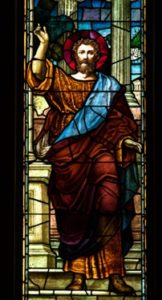
St. Paul is one of the most important and influential of all the saints. He traveled the world, preaching, teaching and establishing churches. He stayed in touch with the faithful through his letters. His writings, contained in the Bible, have influenced the growth and development of the church since the first century.

